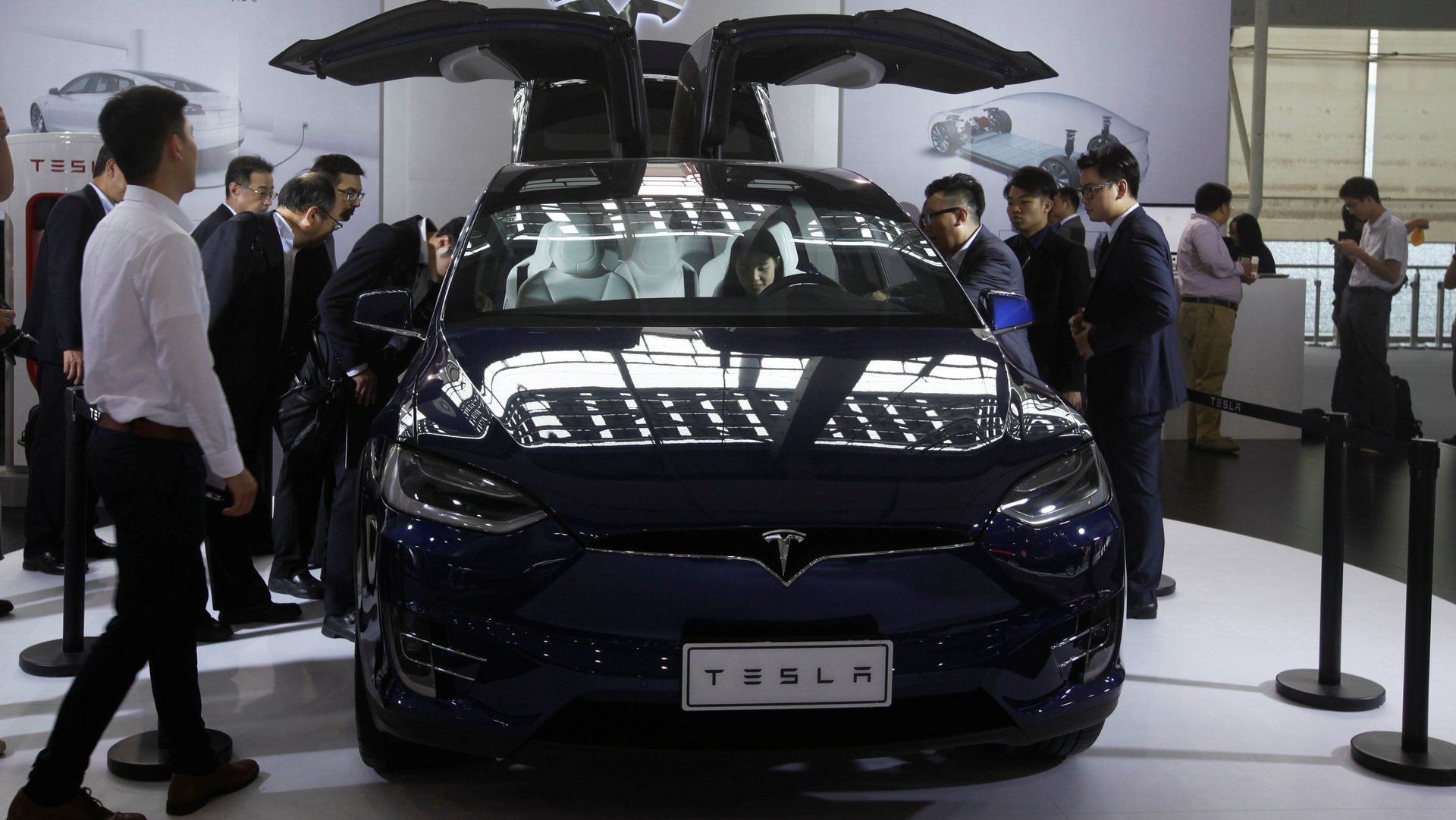Tesla is shifting gears in China by manufacturing its own cars there
Tesla is inching ever closer to its China dream.


Tesla is inching ever closer to its China dream.
Yesterday (June 22) the company confirmed that it is “in talks” with the municipal government of Shanghai to manufacture its vehicles in the country. A Tesla spokesperson provided the following statement:
“Tesla is working with the Shanghai Municipal Government to explore the possibility of establishing a manufacturing facility in the region to serve the Chinese market. As we’ve said before, we expect to more clearly define our plans for production in China by the end of the year. Tesla is deeply committed to the Chinese market, and we continue to evaluate potential manufacturing sites around the globe to serve the local markets. While we expect most of our production to remain in the US, we do need to establish local factories to ensure affordability for the markets they serve.”
The announcement follows more than a year of speculation that the electric-vehicle maker would set up shop in China, and confirms that Tesla is altering its China strategy away from merely exporting vehicles in order to reach more Chinese consumers.. Earlier this year, Musk made a stealth visit to China to visit Wang Yang, one of the nation’s highest-ranking officials, to discuss Tesla’s plans.
Tesla has been selling vehicles in China since 2014, but to date, its share of the electric vehicle market remains marginal, at just 2% as of June 2016, according to trade blog CleanTechnica. There are several reasons for this, one of which is price. Tesla currently exports its vehicles to China, and the government places an import tax of 25% on Tesla cars. The sticker price for the most simple Model S in China is $104,972, compared to $69,500 in the US.
As a result, Tesla sales primarily go to wealthy, status-conscious consumers. While that’s still a huge group of people in China, price-conscious middle-class buyers have dozens of cheaper, homegrown competitors to choose from—including models from BYD, which only makes electric vehicles, as well electric models from car makers like Geely, Chery, and Zotye.
The only way to dodge this tax is to manufacture in China, and the only way to manufacture in China is to form a joint venture with a domestic Chinese carmaker (usually one affiliated with a city government), with foreign ownership capped at under 50%.
Tesla has indeed turned a corner in China after years of lackluster sales. Fortune cites data from research firm JL Warren Capital estimating that Tesla tripled its annual sales in China in 2016, selling 10,400 cars—amounting to 13% of its worldwide sales. The jump in demand will likely only heighten the company’s desire to manufacture in China. Meanwhile, thanks to subsidies and incentives, China’s electric-vehicle market is booming—new registrations have far surpassed that of the US.
Tesla did not answer questions about whom it would form a joint venture with (or if it would form one at all), or its expected start date for manufacturing. Earlier this week, Bloomberg reported that the company was considering setting up a plant in the Linggang development zone, one of many fledgling government-backed hubs for manufacturing and technology.
Investors are seeing dollar signs. On June 22, the day Tesla confirmed its plans, shares of Tesla closed 1.64% higher from the day prior, and 3.65% higher than the close just before Bloomberg first reported Tesla’s ambitions.
Tesla isn’t the only American company to announce plans for manufacturing in China this week. On June 21, Ford confirmed that it would build its new Focus vehicles in China, not Mexico, to sell for export abroad.